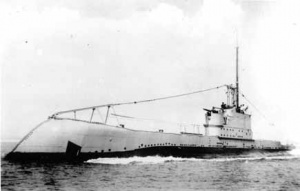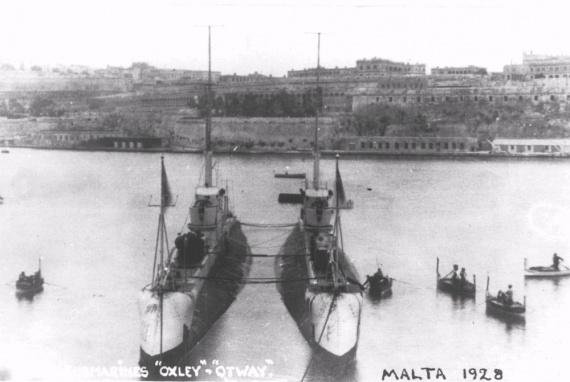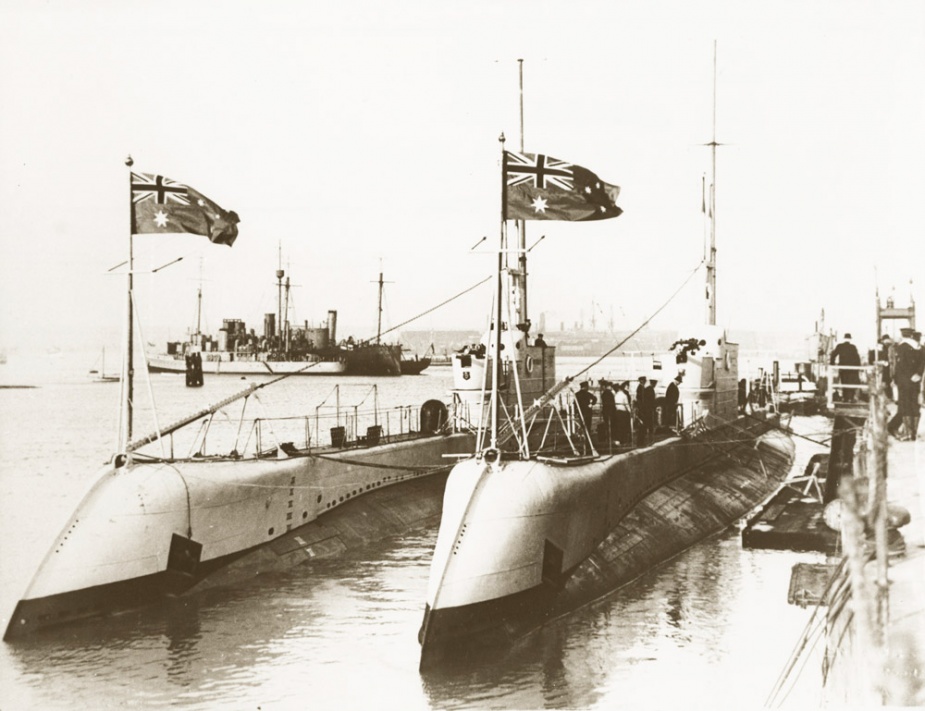HMAS Oxley (I)
| Class |
Odin Class |
|---|---|
| Type |
Submarine |
| Builder |
Vickers Armstrong Ltd, Barrow-in-Furness, England |
| Launched |
30 June 1926 |
| Commissioned |
1 April 1927 |
| Decommissioned |
10 September 1939 |
| Fate |
Lost in action on 10 September 1939 |
| Dimensions & Displacement | |
| Displacement |
|
| Length | 275 feet |
| Beam | 27 feet 7 inches |
| Draught | 14 feet 9 inches |
| Performance | |
| Speed |
|
| Complement | |
| Crew | 5 officers, 48 ratings |
| Armament | |
| Guns | 1 x 4-inch gun |
| Torpedoes | 8 x 21 inch torpedo tubes (6 bow tubes, 2 stern tubes) |
HMAS Oxley was commissioned on 1 April 1927 under the command of Commander Hugh R Marrack, DSC,RN.
Oxley and her sister boat Otway were modified units of the British O Class submarines, from which they differed slightly in appearance. The Os were the first class of submarines of the post World War I design built for the Royal Navy and the first class of British submarines to bear names as opposed to alpha-numeric designations.
Oxley was named after the famous Australian explorer Lieutenant John Oxley who himself had served in the Royal Navy during the 19th century and who was an early Surveryor-General of NSW. Both of the Australian vessels were ordered under the RAN's 1924-29 development programme. On completion Oxley was temporarily attached to the Royal Navy 5th Submarine Flotilla before departing Portsmouth in company with Otway on 8 February 1928.
Their delivery voyage was the longest unescorted passage undertaken by British submarines up to that time and both captains were under orders to proceed on the surface with no diving to be undertaken en route. Heavy weather was encountered during the passage through the Bay of Biscay and during the transit to Malta cracks began appearing in Otway's engine columns. On arrival in Malta both vessels were surveyed and Oxley too was found to have similar cracks in her engine columns. Consequently, both boats were held up in Malta for several months while repairs were made. During that time Lieutenant Frank Getting, RAN assumed command.
On 15 November the two submarines departed Malta proceeding via the Suez Canal and Singapore, arriving in Sydney on 14 February 1929. Their arrival coincided with the deepening economic depression when heavy cuts were being made in defence expenditure. Consequently submarines were maintained in commission until the end of 1929, when the decision was made to pay them off into reserve. Twice a month they were taken to sea for diving exercises, but these intermittent attempts to maintain the boats in operational condition proved not only costly but quite inadequate.
The Australian Government subsequently made the decision to hand the two vessels over to the Royal Navy in order that they might be properly maintained as fully effective units of the British submarine force. Accordingly they were gifted to Britain on 10 April 1931 in Sydney and taken to England by Royal Navy submariners sent out to Australia to man them.
With the outbreak of World War II, HMAS Oxley was assigned to patrol duty off the coast of Norway, where, unfortunately, she was torpedoed and sunk on 10 September 1939 by another British submarine, HMS Triton, who had mistaken her for an enemy vessel. There were only two survivors.
Further reading
- 'Australian Submarines: A History' by Michael WD White - published by AGPS Press, Canberra, 1992.
- 'Australia's Ships of War', John Bastock, Angus & Robertson, Sydney, 1975.





